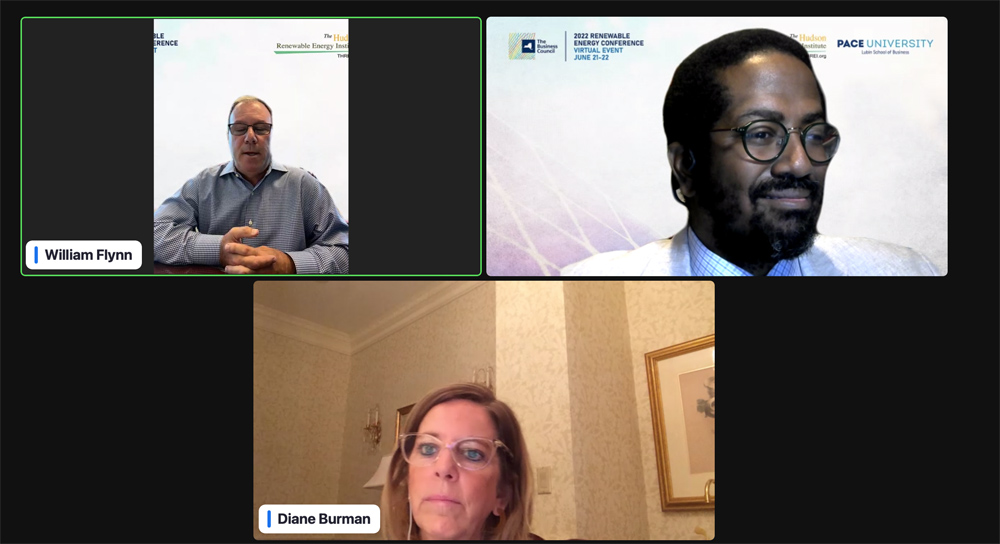A New Jersey bill designed to help solar developers who say that delays beyond their control are threatening the viability of some projects has raised concerns about the costs to ratepayers.
The bill, which the Senate Energy and Environment Committee backed 5-0 on June 9, would automatically extend the completion deadline for qualified projects. The extension would be available for projects that are in danger of failing to be completed by the designated deadline because of a “tolling” event and would continue as long as the event continues.
The definition of a “tolling event” includes: any action or inaction by PJM or an electric utility; a PJM or utility moratorium on new applications; any “new application process, study, report or analysis established” by the RTO or a utility; or an “undue” delay caused by local government planning board or other entity in supplying a required permit.
The bill, S2732, would cover 33 projects — mainly on landfills and brownfields — that together would total 500 MW, says Sen. Bob Smith (D), one of two bill sponsors and the committee chairman.
The bill touches an ongoing concern among solar developers that New Jersey projects can be derailed, and deadlines broken, by factors beyond their control, such as equipment delays stemming from supply chain issues, labor shortages, delays in getting municipal permits and difficulties getting projects connected to the grid.
“These problems have been devastating to the industry,” Lyle Rawlings, president of the Mid-Atlantic Solar & Storage Industries Association, told a hearing into the bill. “They’ve caused delays; they’ve caused tremendous price increases … it could be an existential threat to some businesses if they are not provided relief.”
The problem is complicated by a reshaping of the state’s solar incentive programs by the Board of Public Utilities (BPU) in recent years as it has sought to reduce the cost to ratepayers of solar subsidies, which has increased the consequences of a project missing a completion deadline. The BPU in May 2020 replaced the state’s long-time solar incentive program, the Solar Renewable Energy Certificate (SREC) program, which paid about $250/MWh, with the temporary Transition Renewable Energy Certificate (TREC) program, which granted incentives of $90 to $150/MWh. In July, the TREC program ended and was replaced by the Successor Solar Incentive (SuSi) program, which pays incentives of $70 to $100/MWh depending on the project.
The changes mean that a project with a TREC incentive that fails to meet its completion deadline could lose the incentive and have to apply for another under the less lucrative SuSi program. The only remedy would be to apply for a deadline extension to the BPU, which has been reluctant to grant extensions.
Evaluating such extension requests, the BPU has to consider, for example, whether the delay is genuinely because of circumstances beyond the developer’s control, or the applicant’s project was from the beginning unlikely to make the deadline and they are is seeking to remedy the problem with an extension.
During the hearing, Smith recounted that the BPU told him that about 75% of the 4,000 applications for TREC incentives were “bogus, meaning that it was just somebody putting in a slip to keep their name in line for a TREC, but not necessarily with any intention to build.”
The proposed legislation, however, would remove the need for a BPU deadline extension and instead grant qualified applicants an “automatic extension.”
Extension Questions
In a June 8 letter to the committee, the New Jersey Division of Rate Counsel opposed the bill, saying it “will inevitably result in increased rates for utility ratepayers.”
The bill would remove the BPU’s ability to deny extensions and prohibit it “from even investigating the factual accuracy of the certification” by a developer claiming that a tolling event had delayed its project, the Rate Counsel said. The legislation also would prevent the board from setting the length of an extension, if it concluded one was warranted, and replace its expertise in judging whether a project deserved the extension with an automatic extension award, the agency said.
That would enable projects to continue, and eventually receive incentives, that otherwise would fail because they otherwise would not meet the deadline, the counsel said.
“It would eliminate the board’s ability to enforce any deadlines and result in the payment of substantial excess incentives,” it said. “And since ratepayers ultimately fund these financial incentives, this bill will increase utility rates.”
Developers testifying before the committee, however, outlined the kind of scenarios that highlight the need for the legislation.
Melissa Sims, owner of Ecological Systems, a Manalapan-based solar development company, said she has two projects underway that will be finished within the deadline, except that each will be missing a small part. In one, she has waited several months for a circuit breaker that she was initially told would take 70 days to arrive.
Sims said she feared that because of the delay, she will fail to meet the deadline of the TREC grant awarded for the project.
“I cannot stress enough how serious and devastating it will be for anyone who has a solar project under construction who is experiencing these types of delays,” she said. “If I don’t have the breaker, I can’t call for my electrical inspection. And if I can’t call for my electrical inspection, I can’t get permission to operate from the utility. And if I can’t get permission to operate from the utility, I can’t get my TREC.”
Joshua Lewin, president of Helios Solar Energy, said he also has two projects in jeopardy because of similar problems, including a 1-MW project in Millville that could miss the completion deadline because he is still waiting for the arrival of the main distribution panel, which was ordered last July. He estimated that the customer would lose about $780,000 in revenue if the delay causes the project to miss its completion deadline.
“We’re constantly re-engineering some of the one-line diagrams and pieces of equipment to try to accommodate what might be available in the next couple of weeks or a couple of months,” he said. “But there are items that are just unavailable.”
Connection Obstacles
Business groups — among them the New Jersey Business and Industry Association and the South Jersey Chamber of Commerce — support the bill, as do environmentalists, including the New Jersey league of Conservation Voters.
Smith said the delays mean that New Jersey is “not keeping its promises” to provide a transition period between the SREC and the SuSi program, because developers find they can’t meet the deadlines of the temporary TREC program, which was meant to soften the transition.
“We said we would do lower [incentives] to have a transition, ultimately, to no subsidies,” he said. “But we were not performing.” Instead, he said, developers and their customers — through no fault of their own — face the loss of those incentives because of delays, and “we’re just saying, ‘Hey, tough, tough on you.’”
Lengthy delays connecting new projects to PJM are also common. The RTO said in February that it had 220 GW of capacity in the queue, of which renewables made up 95%. (See PJM Files Interconnection Proposal with FERC.)
“This is not an issue with New Jersey; this is an issue with PJM,” Doug O’Malley, director of Environment New Jersey, told the Senate Energy and Environment Committee as he offered support for the bill on June 9. “PJM is essentially throwing up the red stop sign and saying ‘do not proceed with solar,’ and that’s creating massive problems for the projects that have been teed up.”
The difficulty of connecting solar projects in the state to the grid is also well known. In May developers, testifying in support of a bill that would levy a fee that would raise funds to modernize the grid, said the grid is so old and its capacity so limited that new projects can’t be connected in some areas of the state. (See Solar Developers: NJ’s Aging Grid Can’t Accept New Projects.)
Awaiting Permission
A recent case before the BPU at its June 8 meeting, the latest in a series of deadline extension requests, highlighted the difficulties.
Project developer ESNJ-Key-Gibbstown, seeking to finish a 1.38-MW carport solar project located in Gibbstown, in South Jersey, had received three extensions since the project was approved for TREC incentives in June 2020. It then sought an additional extension to move the deadline to Dec. 31 because of the inability to connect the project to the grid through Atlantic City Electric (ACE).
The developer, according to the BPU order on the case, had “completed construction,” had a conditional permit to operate and was “capable of being fully energized and connected to the grid.” However, the order said, the developer could not get ACE to deliver the project’s full capacity to the grid because “ACE has not yet completed offsite upgrades necessary to allow interconnection for the full capacity of the project.” As a result, the project could only operate generating 50 kW.
The order said that BPU staff have “traditionally been reluctant to recommend that the board provide extensions for solar projects that miss their expiration dates because of supply chain issues, general interconnection processing delays and other factors that, while regrettable, do not rise to the level of warranting an extension.” Yet the staff recommended a deadline extension, and the board approved it.
“This does not appear to be a case of a project coming into the [TREC] program with an underdeveloped project development plan,” staff concluded, noting that the developer had done “everything in its power to complete its project” by the April deadline.
BPU President Joseph Fiordaliso said the board’s decision “struck the necessary balance of fairness to applicants whose projects are otherwise complete with a strong interest of the ratepayer who should always receive what they pay for, no more and no less.”
Still, he said, the case highlights the difficulties facing the state.
“When we’re talking to executives from utility companies, we are constantly talking about interconnection,” he said. “If anything keeps me awake at night, it is the fact that we’re going to have wind turbines out there; we have solar programs out there, and there’s no place to plug them in.”

